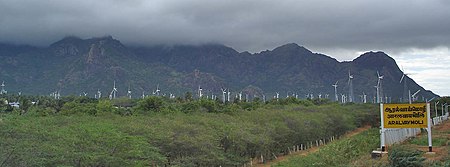In an interview to Science magazine, which appeared on Friday, the PM said: "What's happening in Kudankulam...the atomic energy programme has got into difficulties because these NGOs, mostly I think based in the United States, don't appreciate the need for our country to increase the energy supply."
He gave the interview to Science Editor of NDTV Pallava Bagla where he categorically blamed the NGOs from USA and Scandinavia for stoking the protests against nuclear plants and genetically modified foods by use of biotechnology.
"Biotechnology has enormous potential and in due course of time we must make use of genetic engineering technologies to increase the productivity of our agriculture. But there are controversies. There are NGOs, often funded from the United States and the Scandinavian countries, which are not fully appreciative of the development challenges that our country faces," Dr Singh said.
Kundankulam, the site of an India-Russia joint venture nuclear power plant project in Tamil Nadu, went on a full scale protest mode, days after Prime Minister Manmohan Singh promised Russia that the project will be operationalised in a couple of weeks.
The villagers in and around the area in Tirunelveli district, which 614 km from state capital Chennai, took out rallies.
The villagers said the plant is not safe and demanded that the uranium brought there be removed.
S P Udayakumar, the coordinator of the People's Movement Against Nuclear Energy, said they would not let the government proceed with the project that risked their lives.
In 2011, black flags were shown and hunger strikes were announced by the locals following Prime Minister Manmohan Singh's assurance to Russian authorities that the Kudankulam row would be resolved soon and it would be operational in a couple of weeks.
Prime Minister Singh said that the Rs 14,000 crore project "cannot be simply left idle" because it will solve the power problem of Tamil Nadu.
Tamil Nadu Chief Minister J Jayalalithaa has written letters to the PM to allay the people's fears on safety.
Villagers had first began the protest last year, resorting to hunger strikes and later continued with the agitation in various forms against the nuclear plant.
Even though India’s Department of Atomic Energy had cleared the Rs 13,000-crore project, locals and environmental organisations, including Greenpeace, have raised concerns over the project's use of purportedly risky Russian technology.
He gave the interview to Science Editor of NDTV Pallava Bagla where he categorically blamed the NGOs from USA and Scandinavia for stoking the protests against nuclear plants and genetically modified foods by use of biotechnology.
"Biotechnology has enormous potential and in due course of time we must make use of genetic engineering technologies to increase the productivity of our agriculture. But there are controversies. There are NGOs, often funded from the United States and the Scandinavian countries, which are not fully appreciative of the development challenges that our country faces," Dr Singh said.
Kundankulam, the site of an India-Russia joint venture nuclear power plant project in Tamil Nadu, went on a full scale protest mode, days after Prime Minister Manmohan Singh promised Russia that the project will be operationalised in a couple of weeks.
The villagers in and around the area in Tirunelveli district, which 614 km from state capital Chennai, took out rallies.
The villagers said the plant is not safe and demanded that the uranium brought there be removed.
S P Udayakumar, the coordinator of the People's Movement Against Nuclear Energy, said they would not let the government proceed with the project that risked their lives.
In 2011, black flags were shown and hunger strikes were announced by the locals following Prime Minister Manmohan Singh's assurance to Russian authorities that the Kudankulam row would be resolved soon and it would be operational in a couple of weeks.
Prime Minister Singh said that the Rs 14,000 crore project "cannot be simply left idle" because it will solve the power problem of Tamil Nadu.
Tamil Nadu Chief Minister J Jayalalithaa has written letters to the PM to allay the people's fears on safety.
Villagers had first began the protest last year, resorting to hunger strikes and later continued with the agitation in various forms against the nuclear plant.
Even though India’s Department of Atomic Energy had cleared the Rs 13,000-crore project, locals and environmental organisations, including Greenpeace, have raised concerns over the project's use of purportedly risky Russian technology.
